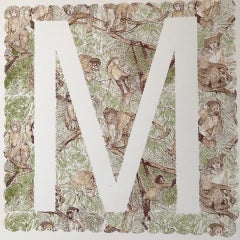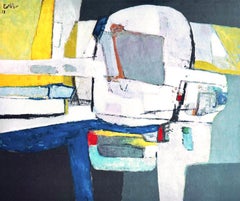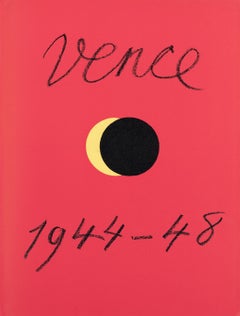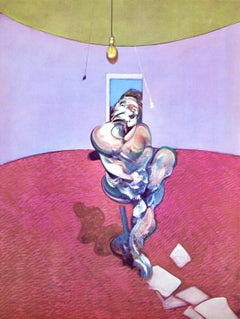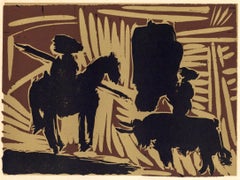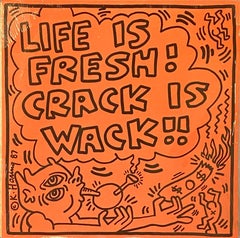Miniature Abstract Prints
21st Century and Contemporary Impressionist Abstract Prints
Paper, Screen
1960s Modern Abstract Prints
Lithograph
1940s Fauvist Abstract Prints
Lithograph
1960s Modern Abstract Prints
Lithograph
1960s Cubist Abstract Prints
Linocut
1980s Pop Art Abstract Prints
Offset, Lithograph
1980s Modern Abstract Prints
Lithograph
1920s Constructivist Abstract Prints
Linocut
1980s Modern Abstract Prints
Screen
1960s Abstract Expressionist Abstract Prints
Lithograph
1940s Modern Figurative Prints
Lithograph
2010s Contemporary Abstract Prints
Intaglio
1970s Modern Abstract Prints
Lithograph
1950s Cubist Abstract Prints
Woodcut
1960s Abstract Expressionist Abstract Prints
Lithograph
1930s Surrealist Abstract Prints
Lithograph
1980s Abstract Prints
Engraving
2010s Abstract Impressionist Animal Paintings
Gold, Silver, Gold Leaf
1970s Minimalist Abstract Prints
Printer's Ink
Late 20th Century Abstract Expressionist Abstract Prints
Engraving
1960s Modern Abstract Prints
Lithograph
1960s Modern Abstract Prints
Lithograph
1970s Abstract Abstract Prints
Lithograph
1960s Modern Abstract Prints
Lithograph
1970s Surrealist Abstract Prints
Lithograph
1960s Modern Abstract Prints
Lithograph
Early 2000s Abstract Expressionist Abstract Prints
Etching, Aquatint
1970s Orphist Abstract Prints
Lithograph
2010s Contemporary Portrait Prints
Engraving, Photogravure
1960s Modern Abstract Prints
Paper, Screen
1970s Op Art Abstract Prints
Lithograph
1970s Modern Abstract Prints
Woodcut
1960s Modern Abstract Prints
Lithograph
1950s Orphist Abstract Prints
Lithograph
1950s Cubist Abstract Prints
Lithograph
Early 2000s Pop Art Abstract Prints
Ink, Mixed Media, Lithograph, Offset
1970s Modern Abstract Prints
Lithograph
1950s Cubist Abstract Prints
Woodcut
Late 19th Century French School Interior Prints
Lithograph
1960s Abstract Abstract Prints
Paper, Lithograph
21st Century and Contemporary Abstract Expressionist Abstract Prints
Etching
1970s Modern Abstract Prints
Lithograph
2010s Abstract Abstract Prints
Etching, Ink, Archival Ink, Watercolor, Archival Paper
1960s Modern Still-life Prints
Lithograph
1960s Cubist Abstract Prints
Linocut
Late 19th Century Victorian Interior Prints
Lithograph
1970s Modern Abstract Prints
Lithograph
1960s Abstract Abstract Prints
Lithograph
1950s Modern Abstract Prints
Lithograph
1980s Conceptual Abstract Prints
Screen
1950s Abstract Geometric Abstract Prints
Lithograph
1960s Surrealist Abstract Prints
Lithograph
2010s Contemporary Abstract Prints
Panel, Pigment
Early 2000s Abstract Expressionist Abstract Prints
Lithograph, Offset
1960s Abstract Figurative Prints
Lithograph
1980s Contemporary Abstract Prints
Rag Paper, Etching, Aquatint
1960s Cubist Abstract Prints
Linocut
1960s Surrealist Abstract Prints
Lithograph
1950s Expressionist Abstract Prints
Lithograph
1950s Surrealist Figurative Prints
Lithograph
Read More
Joan Mitchell’s Rare, Late-Career Diptych Buzzes with Life
Beneath the inky blackness, the painter’s irrepressible energy electrifies this pair of intaglio prints.
The 1stDibs Guide to Types of Abstract Art
Get to know the key movements and artists who have influenced visual culture for more than a century.
Get to Know the Artists Who Led the Op Art Movement
In the 1960s and '70s, the hypnotic creations of Op artists went mainstream and influenced the look of pop culture.
